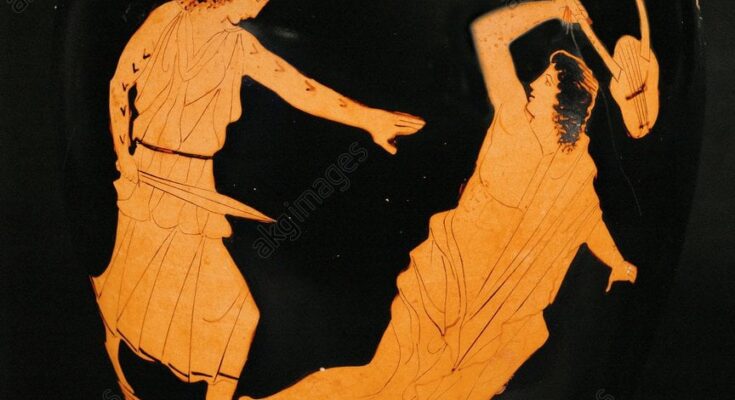Tattoos were considered a sign of “otherness” in ancient Greece, as it was either foreigners or slaves, criminals, and captives who had tattoos in ancient Greek society.
Body modification, such as tattoos and piercings, has been common throughout human societies across the world since Neolithic times. Humans have felt the urge to modify their bodies with tattoos for various cultural, religious, and aesthetic reasons for centuries.
While tattooing developed independently across numerous cultures, Greeks were among the first people to begin inking their skin, as historical records date ancient Greek tattooing to as early as the 5th century BC.
Tattooing has only become part of the mainstream in much of the world in recent decades, as it was previously linked to criminality in many places. A 2019 poll showed that three in ten Americans had at least one tattoo, and this number may be increasing.
Tattoos linked to criminals, slaves in ancient Greece
In ancient Greece, people had much more negative views regarding tattooing than many do today.
Tattooing, as a tradition, developed in ancient Greece to punish and identify criminals and outcasts on the fringes of society.
Slaves were often tattooed with the Greek letter delta (Δ), which is the first letter in the ancient Greek word for slave, “Δούλος.”
People who committed crimes could be tattooed on visible parts of the body, such as their foreheads, with symbols or letters that indicated the nature of their crime.
According to ancient Greek historian Herodotus, the ancient Greeks developed this method of punishing criminals from the Persians, who used tattoos on criminals and prisoners of war frequently.
The historian mentions that some Thebans who were left behind by their commander Leontiades during the Persian Wars joined enemy forces. Persians tattooed the Greek defectors, and those marks prevented the men from returning to Thebes after the Persians’ defeat.
Famously, the Athenians tattooed the owl, the symbol of their city, on the foreheads of Samian prisoners after they defeated them in battle.
When the Samian forces went on to win against the Athenians in a different battle, they tattooed Samian warships on the foreheads of the Athenians.
Greeks widely considered tattooing to be a foreign practice, and the people with tattoos that they most commonly encountered were not Greek.
Body modification linked with non-Greeks
Tattoos were a symbol of high status among the Thracians, an ancient group of people who lived across Eastern and Southern Europe, particularly in the Balkans. Ancient Greeks viewed the Thracians as warlike, tribal, and even barbaric.
In Thracian society, those without tattoos were actually considered to be lower class than those with such markings.
High-status Thracian women, who were known to be very strong and even vicious fighters in antiquity, were heavily tattooed. Ancient Greek philosopher Plutarch posits that the Maenads, followers of Dionysus who were linked to Thracian women, were tattooed as punishment for killing Orpheus in Greek myth.
Clearchus of Soli, an ancient Greek philosopher from the fourth century BC, provides an alternative backstory for the Thracian women’s tattoos.
According to Clearchus, after a war between the Thracians and the Scythians, who were known to practice intricate and artful tattooing, as shown by Scythian mummies with their tattoos still intact, the Scythians took many Thracians captive.
After killing all the men, the Scythian women tattooed their Thracian counterparts.
The Greek philosopher believes that the Thracian women then decided to tattoo the rest of their bodies so as to remove their association with their captors, an act which soon became tradition among Thracian women.
Famed Greek historian Xenophon also describes his encounters with tattooed foreigners in his work Anabasis.
During his journeys near the Black Sea, Xenophon came across the “Mossynoikoi,” who were tattooed across their bodies with floral shapes and designs.
Tattooing as a punitive measure continued in ancient Greece until Christianity became the dominant religion in the country.
Emperor Constantine I actually banned face tattoos in 330 AD, effectively putting an end to the practice of tattooing criminals as punishment in Greece.
He argued that since man was created in the image of God, defiling one’s face was an affront to God Himself.
In the eighth century, tattooing as a whole was banned due to its links to paganism by the Second Council of Nicaea.



